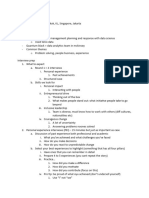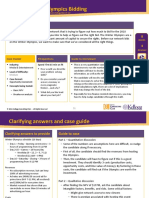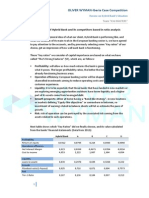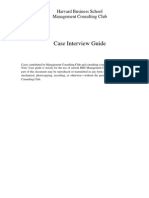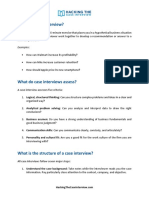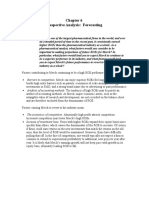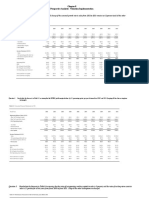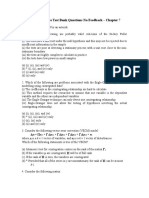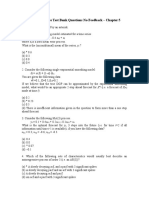0% found this document useful (0 votes)
131 views30 pagesCase Interview Marathon Workshop: Overhead Slides v1.0
The document provides an overview of Victor Cheng's case interview marathon workshop. The workshop aims to teach participants the basics of case interviews, how to structure the analysis of a case study, and how to effectively open, analyze, and close a case. It also outlines the agenda for the workshop, which will cover case interview frameworks, demonstration of common cases, tips for practice, and a question and answer session.
Uploaded by
Anonymous 8ooQmMoNs1Copyright
© © All Rights Reserved
We take content rights seriously. If you suspect this is your content, claim it here.
Available Formats
Download as PDF, TXT or read online on Scribd
0% found this document useful (0 votes)
131 views30 pagesCase Interview Marathon Workshop: Overhead Slides v1.0
The document provides an overview of Victor Cheng's case interview marathon workshop. The workshop aims to teach participants the basics of case interviews, how to structure the analysis of a case study, and how to effectively open, analyze, and close a case. It also outlines the agenda for the workshop, which will cover case interview frameworks, demonstration of common cases, tips for practice, and a question and answer session.
Uploaded by
Anonymous 8ooQmMoNs1Copyright
© © All Rights Reserved
We take content rights seriously. If you suspect this is your content, claim it here.
Available Formats
Download as PDF, TXT or read online on Scribd
/ 30















